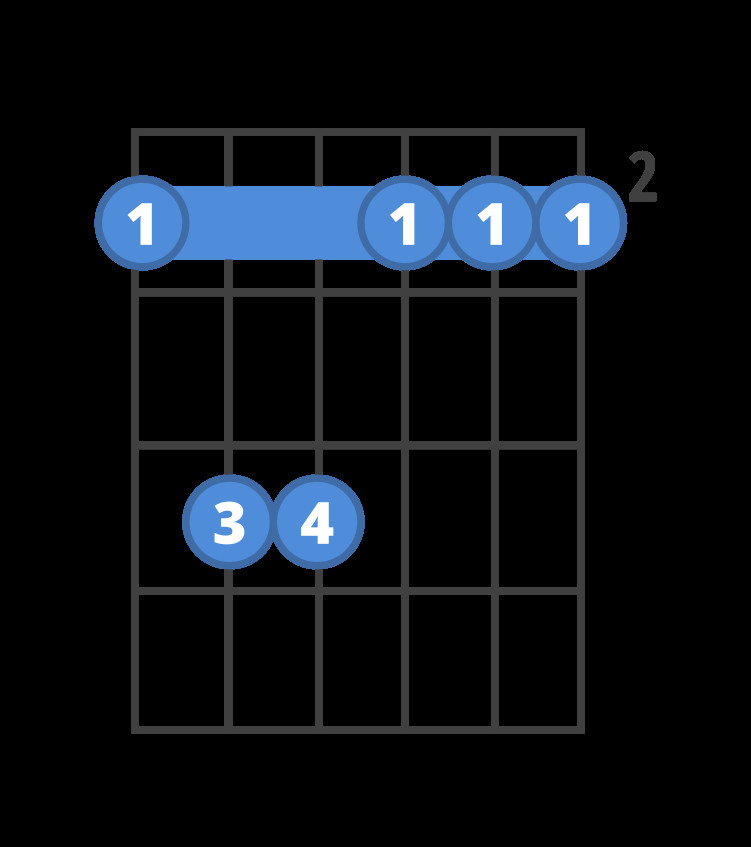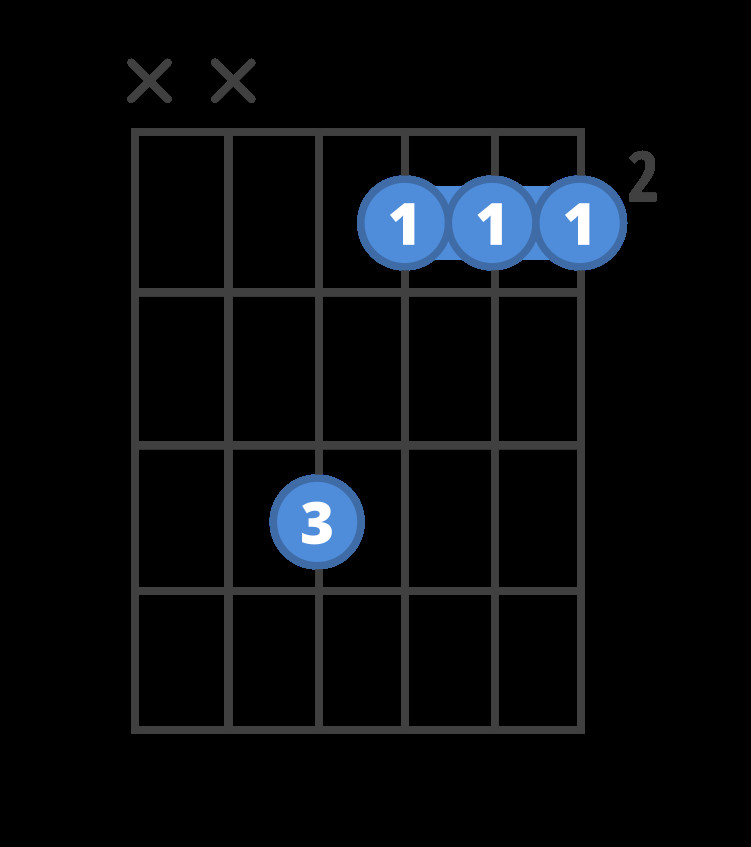The F#m guitar chord, or F sharp minor, is a staple in countless songs, but it’s often a hurdle for beginner guitarists. If you’ve been struggling to get your fingers around this chord, you’re not alone! “Chord F#m Guitar” is a frequently searched term, and for good reason. Many guitar learners find the standard F#m challenging due to its barre chord nature.
But don’t worry, mastering the F#m chord is absolutely achievable, and we’re here to guide you through it. This guide will break down the F#m chord into easy-to-understand steps and offer multiple ways to play it, starting with the most common barre chord version and progressing to simpler alternatives. We’ll also point you to resources that can make practicing this chord, and others, more effective and even fun.
The Classic F#m Barre Chord: A Rite of Passage
This is the version of the F#m chord you’ll most likely encounter first. It’s a full barre chord, requiring you to press down multiple strings with one finger. While it might seem daunting initially, mastering barre chords like F#m opens up a world of possibilities on the guitar fretboard.
 Chord diagram for the F#m guitar chord.
Chord diagram for the F#m guitar chord.
Here’s how to form the standard F#m chord:
- Index Finger Barre: Place your index finger across all six strings at the 2nd fret. Ensure you’re pressing down firmly just behind the fret to get a clean sound from each string.
- Ring Finger Placement: Position your ring finger on the 5th string (A string), 4th fret.
- Pinky Finger Placement: Place your pinky finger on the 4th string (D string), 4th fret.
- Strum: Strum all six strings from the low E string to the high E string.
The key to a good sounding barre chord is even pressure across all strings. Beginners often struggle with buzzing or muted strings, which is perfectly normal. Consistent practice will build your finger strength and technique. If you’re finding this version too difficult to start with, keep reading for easier alternatives!
Simplified Barre F#m: Easing into Barre Chords
Barre chords become easier when you reduce the number of strings you need to barre. This simplified F#m version focuses on barring just the top three strings, making it less demanding on your index finger strength.
 Chord diagram for the F#m guitar chord.
Chord diagram for the F#m guitar chord.
Here’s how to play the easier barre F#m:
- Index Finger Partial Barre: Place your index finger across the 1st, 2nd, and 3rd strings (E, B, and G strings) at the 2nd fret. Focus on applying pressure to these three strings.
- Ring Finger Placement: Place your ring finger on the 4th string (D string), 4th fret.
- Strum: Strum only the thinnest four strings, from the D string to the high E string. Avoid strumming the lower E and A strings for this version.
This version is a great stepping stone for mastering full barre chords. It allows you to practice the barre technique with less finger pressure required. You can use this F#m variation in many songs, and it’s perfect for building confidence with barre shapes.
The No-Barre F#m: The Easiest F#m for Beginners
For absolute beginners or those who want a break from barre chords, there’s a no-barre version of the F#m chord. This version only uses the top three strings and is significantly easier to fret.
- Index Finger: Place your index finger on the 3rd string (G string), 2nd fret.
- Middle Finger: Place your middle finger on the 2nd string (B string), 2nd fret.
- Ring Finger: Place your ring finger on the 1st string (high E string), 2nd fret.
- Strum: Strum only the thinnest three strings – the 1st, 2nd, and 3rd strings. Make sure to avoid strumming the thicker strings (E, A, D strings).
This no-barre F#m is the easiest way to play the chord and is ideal for situations where you need a quick and simple F#m. While it’s not a full voicing of the chord, it still conveys the F#m sound effectively, especially in simpler song arrangements.
Take Your F#m Further: Lessons and Practice Tools
Learning the F#m chord is just one step in your guitar journey. To truly master it and progress further, consistent practice and structured lessons are invaluable.
 Barre chord lessons image.
Barre chord lessons image.
If barre chords still feel intimidating, consider exploring dedicated barre chord lessons. These lessons, often structured as video series, can demystify barre chords, teach you proper technique, and help you overcome common challenges like fret buzz and slow chord changes. Learning barre chord shapes and how to move them around the fretboard will unlock countless songs and musical possibilities.
To make practice more engaging and effective, consider using practice tools designed for guitarists. ChordBank offers games and flashcards specifically designed to help you learn and memorize chords like F#m.
Gamify Your Chord Practice
Games can be a surprisingly effective way to drill chords into your muscle memory. Chord-based games make learning fun and interactive, turning practice into an enjoyable activity.
 iPhone showing ChordPop! game.
iPhone showing ChordPop! game.
For example, ChordPop! challenges you to play chords correctly to fire darts and pop balloons, while Blackjack uses chords to deal cards and place bets. These games use your device’s microphone to listen to your playing, providing real-time feedback and making practice feel less like a chore.
Smart Flashcards for Chord Transitions
Smooth transitions between chords are crucial for playing songs fluidly. Smart flashcards are designed to help you master chord changes, improving your speed and accuracy.
 iPhone showing ChordPop! game.
iPhone showing ChordPop! game.
Practice transitioning between F#m and common chords like A major, D major, and E major. Flashcards present chord pairings, prompting you to switch between them quickly and cleanly. Starting with F#m and A major is a great combination, as these chords often appear together in songs. As you become more comfortable, expand to sequences like F#m, A, D, and E to challenge yourself further.
By exploring different versions of the F#m chord, utilizing practice tools, and engaging with structured lessons, you’ll be well on your way to mastering the F#m guitar chord and expanding your guitar skills. Keep practicing, and you’ll find this once-challenging chord becoming a comfortable and valuable part of your playing!

